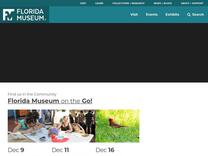FL VP Course: Anne Pfund – Montbrook Fossil Dig https://www.floridamuseum.ufl.edu/montbrook/blog/fl-vp-course-anne-pfund/
Day 1: Saturday, February 5, 2022 My first day on the dig! I had no idea what to expect. I arrived in the morning, it was so cold, I was glad to have as many layers as I did. I was given my instructions, gathered my tools, and was told to pick a square. The pressure! How could I possibly choose one
what I was doing, no interruptions meant that I could really focus on the task at hand

